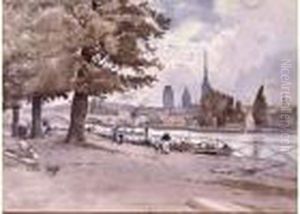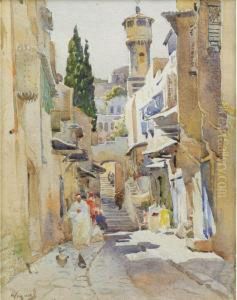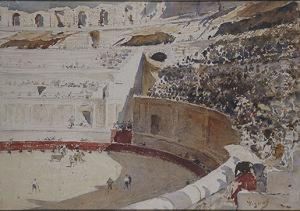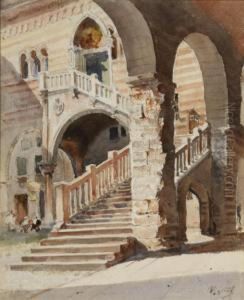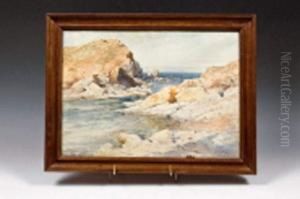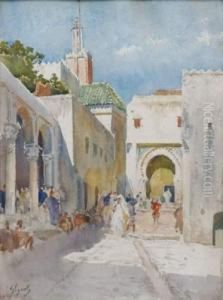Pierre Vignal Paintings
Pierre Vignal was a French painter associated with the Impressionist movement, which emerged in France in the latter half of the 19th century. Born on January 11, 1855, in Clermont-Ferrand, France, Vignal was known for his landscapes, seascapes, and depictions of gardens, which he rendered with delicate color and light. He was influenced by the leading Impressionists of his time, such as Claude Monet and Pierre-Auguste Renoir, and he developed a personal style that reflected the movement's emphasis on capturing the effects of light and atmosphere.
Vignal studied at the École des Beaux-Arts in Paris, where he trained under the academic painter Alexandre Cabanel. Despite his traditional academic training, Vignal was drawn to the innovative techniques and approaches of the Impressionists. He eventually participated in the Impressionist exhibitions, which were a series of independent art shows organized by the artists themselves as an alternative to the official Salon, the conservative state-sponsored exhibition that dominated the French art scene at the time.
During his career, Vignal traveled extensively throughout France, finding inspiration in the diverse landscapes he encountered. He painted the coasts of Normandy, the countryside of Provence, and the urban scenes of Paris. His work is characterized by a subtle palette and a focus on the transient effects of light, which he captured with quick, loose brushstrokes—a hallmark of the Impressionist technique.
Despite his alignment with the Impressionists, Vignal never achieved the same level of fame as some of his contemporaries. Nevertheless, he continued to exhibit his work in Parisian galleries and the Salon des Artistes Français, where he received recognition and awards for his contributions to French art.
Pierre Vignal's work is represented in several French regional museums and has been part of various exhibitions focused on the Impressionist movement. He continued to paint and contribute to the art world until his death on December 27, 1925, in Paris. His legacy, while modest compared to the giants of Impressionism, remains a testament to the breadth and diversity of artists who were part of this pivotal period in the history of art.
